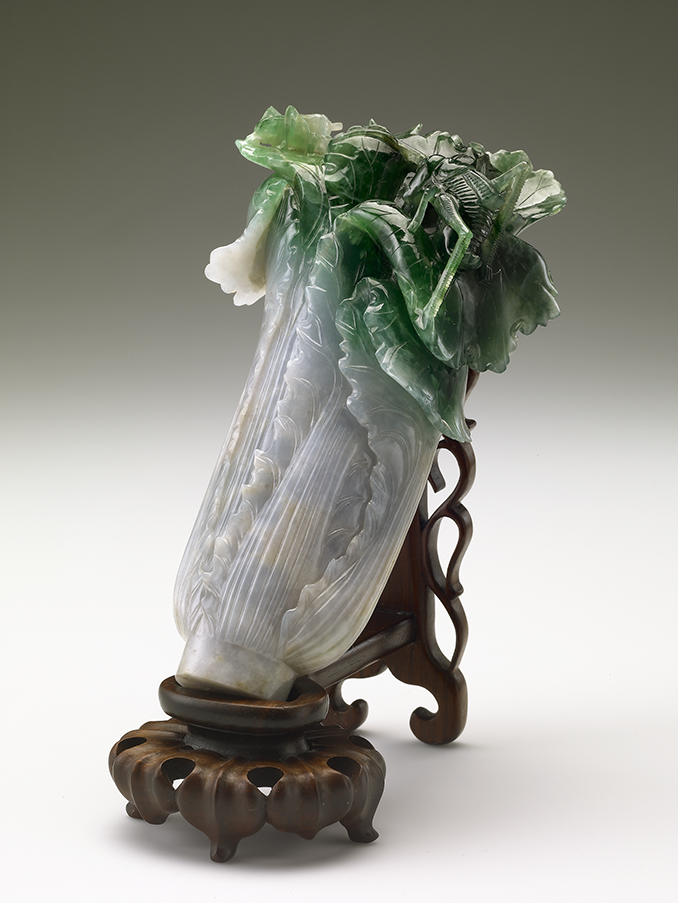Using new media art technology, this exhibit displays from every angle the details on the Jadeite Cabbage, an item in the NPM collection which fully demonstrates the ingenuity of Qing dynasty jade craftsmanship.
Accompanied with spirited music in the background, the audio-visual preview allows audience members to appreciate the majesty of NPM treasures prior to stepping into the physical exhibition space.
Jadeite Cabbage
- Qing dynasty(1644-1911)
- Length: 5.07, Width: 9.1, Height: 18.7cm
Carving jadeite into bokchoy, Chinese cabbage, began to become popular in the middle and late Qing dynasty. The thematic association of bokchoy and insects actually can be traced back to the professional insect-and-plant paintings of the Yuan to early Ming dynasty (13th-15th c.) when they were popular among the people for its auspiciousness. This jadeite piece, wondrously shaped into a bokchoy from its naturally part green and part white material, would have been considered mere second-rate work, full of impurities, had it been made into the usual vase, jar, or ornament because of the inherent cracks and blemishes. However, the artisan ingeniously transformed the material into a vegetable with green leaves and white stem. All its originally unappealing fissures are now embedded amidst the vein patterns and the discolored spots take on the marks of snow and frost. So, by means of an ingenuous hand, defects may be perfected.
The Jadeite Cabbage used to be a curio item displayed in the Eternal Harmony Palace, the residence quarter of Emperor Guangxu's Lady Jin. For this reason, the piece is thought to have belonged to her. Hence, the whiteness of the cabbage is inferred to signify the chastity of the bride; the locust and the katydid at the leaf tips symbolize fertility.
